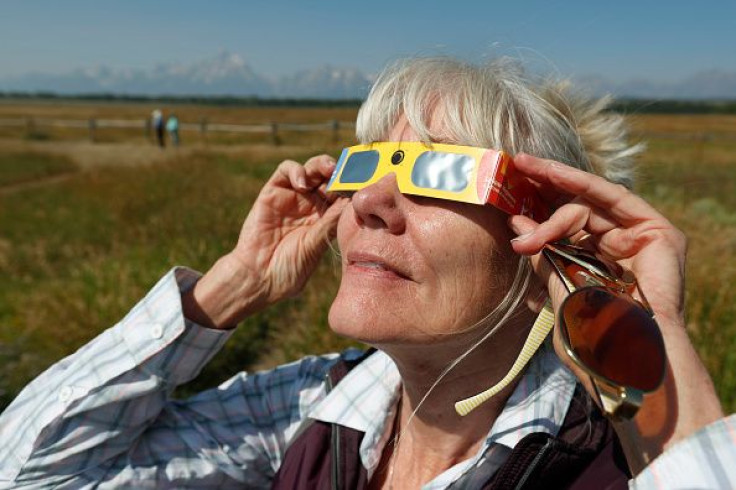Next Total Solar Eclipse In US: How Long Is The Wait?

As the Great American Solar Eclipse is set to begin Monday, hundreds of Americans are queuing up to watch the spectacle as it unfolds.
Given that it will be the first total eclipse since 1918 to sweep across the U.S., chances are that many people will leave no stone unturned to witness it.
However, if for whatever reason you are not able to witness the event, don't lose heart as the wait for the next total eclipse won't be too long.
The next time a solar eclipse will traverse across U.S. will be seven years later, on April 8, 2024, according to NASA.
The path of totality (the swathe across the US from where the total eclipse can be seen) of the 2024 eclipse will run from across northeast Texas to Maine and will cross the path of totality of the 2017 eclipse near Carbondale, Illinois.
It is also said to pass through Dallas, Texas, Indianapolis, Cleveland, Ohio, Little Rock and Buffalo, N.Y.
Did you know there is one spot that will see the total solar eclipse in both 2017 AND 2024!?! (Map courtesy @NationalEclipse ) pic.twitter.com/3W8TVC1NOC
— Scott Wx Blog (@ScottWxBlog) July 21, 2017
The path of the 2024 eclipse is reported to hit Southern Illinois University, which is also going to experience the Aug. 21 eclipse and is calling itself the "Eclipse Crossroads of America.” The university also has many events planned for Monday's eclipse.
For states like Texas, the 2024 eclipse will be far bigger than Monday’s, with Houston seeing 94 percent of the sun being eclipsed, in comparison to 67 percent of the Great American Solar Eclipse. However, the same area will have to wait till April 14, 2200 to be 100 percent eclipsed.
According to NASA, the last time a total solar eclipse was visible from the contiguous U.S. was in 1979. However, only the northwest U.S. was able to witness the sight at the time.
While the next total solar eclipse in the U.S. is scheduled seven years later, the next to be seen from earth will pass through areas of South America and the South Pacific on July 2, 2019, according to NASA. The moon is expected to cover the sun for up to 4 minutes and 33 seconds providing an opportunity for eclipse enthusiasts who are willing to travel outside the country to witness the event.
While the next total eclipse is not very far away, it was a long wait from the previous one to the one on Monday. The last time the U.S. witnessed an eclipse like Monday’s was almost a century ago on Saturday, June 8, 1918.
The last time a total solar eclipse crossed the U.S. from coast to coast was 1918. Here's what it looked like. pic.twitter.com/IAAESOtcMm
— National Eclipse (@NationalEclipse) August 10, 2017
The Aug. 21 eclipse is one of its kind as it will be visible all across the U.S., with the moon completely obscuring the sun in parts of 14 different states throughout the day, at different times.
These states include parts of Oregon, Nebraska, Iowa Kansas, Kentucky, Idaho, Wyoming, Montana, Tennessee, Georgia, Missouri, Illinois, and North and South Carolina. The eclipse is set to start in Lincoln Beach, Oregon at 9:05 a.m. PDT and end in Charleston, S.C. at 4:09 p.m. EDT. It will last two minutes and 40 seconds at most of the places in the path of totality.
© Copyright IBTimes 2024. All rights reserved.











